10 Best Data Lineage Tools in 2026
Summarize this article with:


Most organizations today have become data-centric. They handle large volumes of data flowing in from multiple sources. As data flows through various stages of processing, storage, and usage, maintaining clarity on its origins, transformations, and destination becomes increasingly complex. This is where data lineage tools can provide help.
Data lineage tools can help you visualize your data’s journey throughout its lifecycle. They help confirm the credibility of the data’s source, meticulously track any modifications, and trace the cause of errors, streamlining the troubleshooting process. This article lists the ten best data lineage tools for you to explore by highlighting their key features and how they can streamline data management processes.
What Are Data Lineage Tools?
Data lineage tools are software applications that capture metadata at each stage of your data pipeline. They allow you to map the complex relationships between data elements across various sources, systems, and processes. These tools create a detailed log of your data’s evolution, ensuring transparency and traceability.

With data lineage tools, you can enhance your data governance initiatives and support impact analysis by assessing the downstream effects of data changes made in data pipelines. This, in turn, helps you improve your data’s integrity, accuracy, and reliability, enabling you to make informed decisions and foster a data-driven culture.
10 Best Data Lineage Tools of 2026
1: Atlan
Atlan is a versatile data workspace platform that allows you to manage your data effectively throughout its lifecycle. It provides various functionalities such as data governance, lineage, discovery, cataloging, quality, exploration, and integration, all accessible through a user-friendly, Google-like search interface. Atlan also has a shared business glossary that helps you foster collaboration and data literacy.
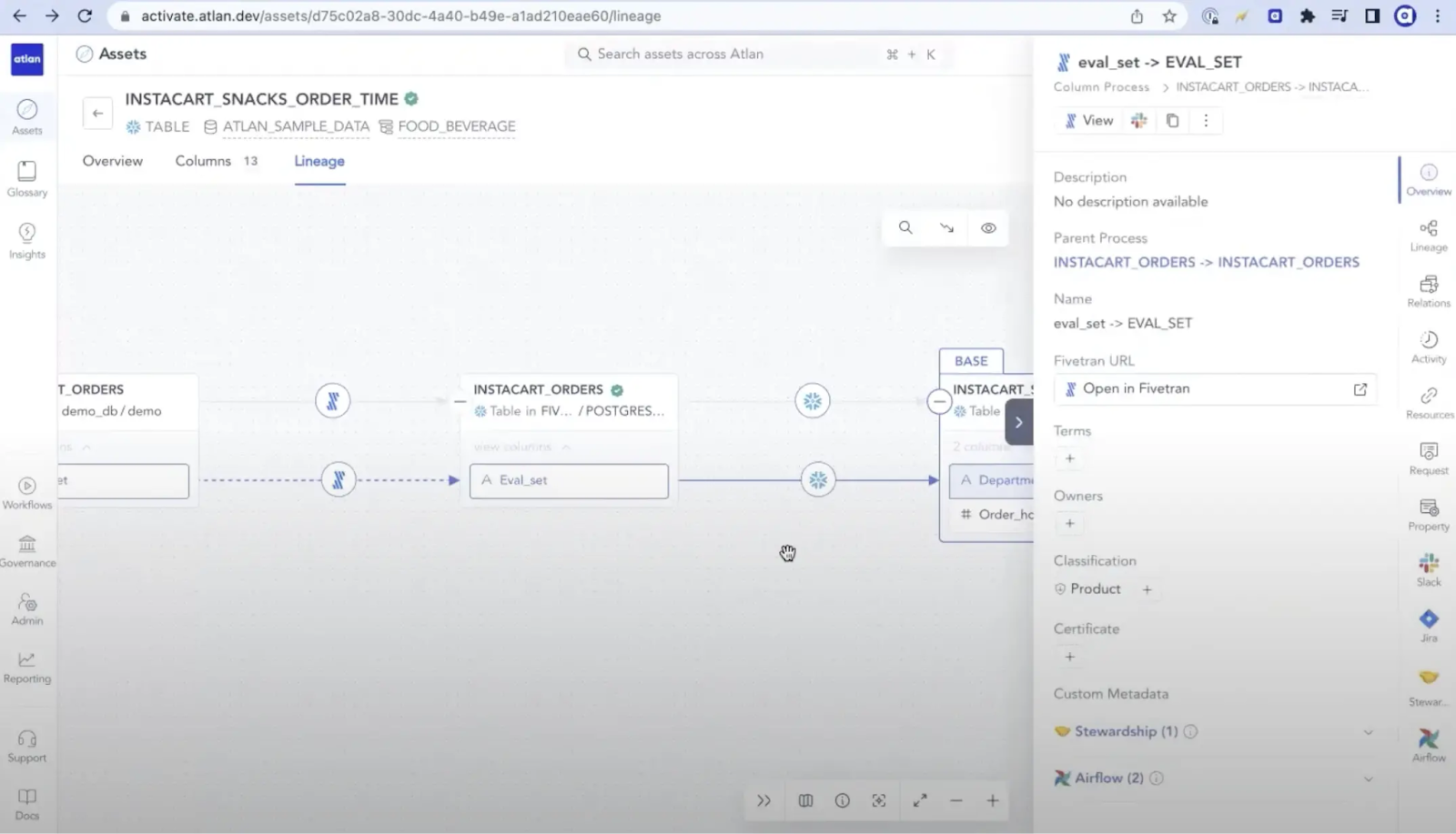
Key Features
Some of the key features include:
- Its robust access controls and data usage policies ensure data security and compliance while promoting data democratization within your organization.
- Atlan automatically analyzes SQL query logs in your data warehouses and BI tools to visualize data lineage maps.
- You can leverage Atlan to download all downstream tables for impact analysis with custom metadata.
2: Informatica Metadata Manager
Informatica Metadata Manager is a robust web-based tool with a centralized repository for streamlining metadata storage and management processes. It offers comprehensive data lineage capabilities that allow you to understand the relationships, quality, and end-to-end flow of data across systems, applications, and transformations. This empowers you to make more informed business decisions.
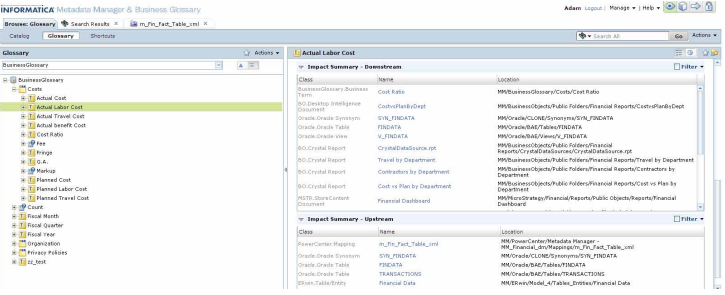
Key Features
Some of the key features include:
- You can visualize your data workflows from source to consumption, aiding in impact analysis and troubleshooting.
- It provides tools that enable you to perform self-service analytics and practice data democratization.
- Supports data governance initiatives by providing visibility and control over your data assets.
3. Alation
Alation is a data catalog solution that helps you centralize metadata to create a comprehensive repository with information about data structures, definitions, and relationships. This enables your organization to enhance data discoverability, understanding, and governance. Alation’s intuitive search capabilities allow you to find relevant data assets using keywords, tags, and other criteria, promoting efficient data utilization.
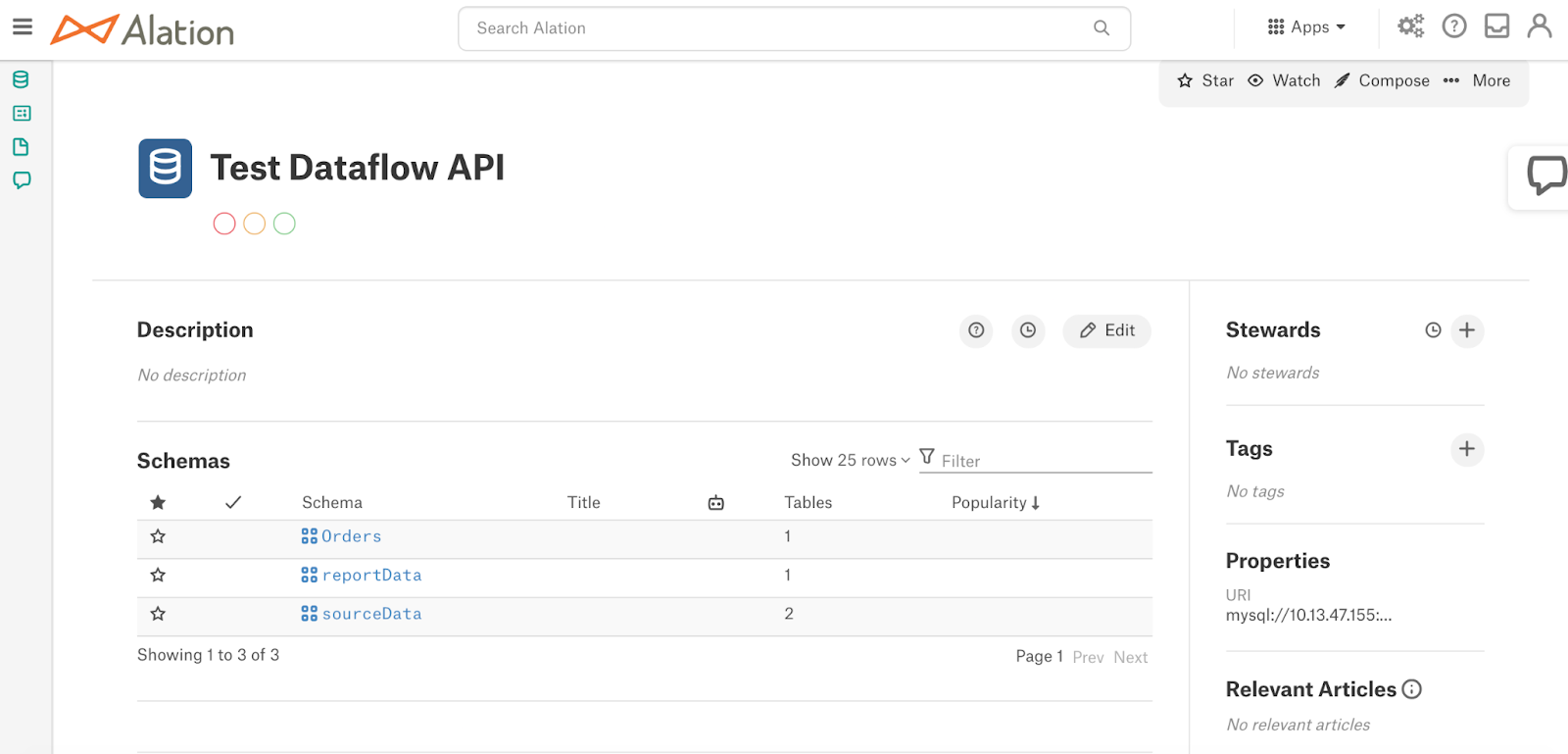
Key Features
Some of the key features include:
- Alation utilizes machine learning to help you with data navigation.
- You can integrate Alation with other data quality tools to help identify and address data quality issues, improving overall data reliability.
- It safeguards sensitive data through strict security measures and role-based access controls.
4. OpenMetadata
OpenMetadata provides a balance of simplicity and detailed data exploration, allowing your technical and non-technical teams to adapt effortlessly to the platform. You can use its drag-and-drop, no-code editor to manually add, modify, or remove elements like tables, pipelines, and dashboards directly on the lineage graph. This creates a more detailed and accurate representation of data provenance.
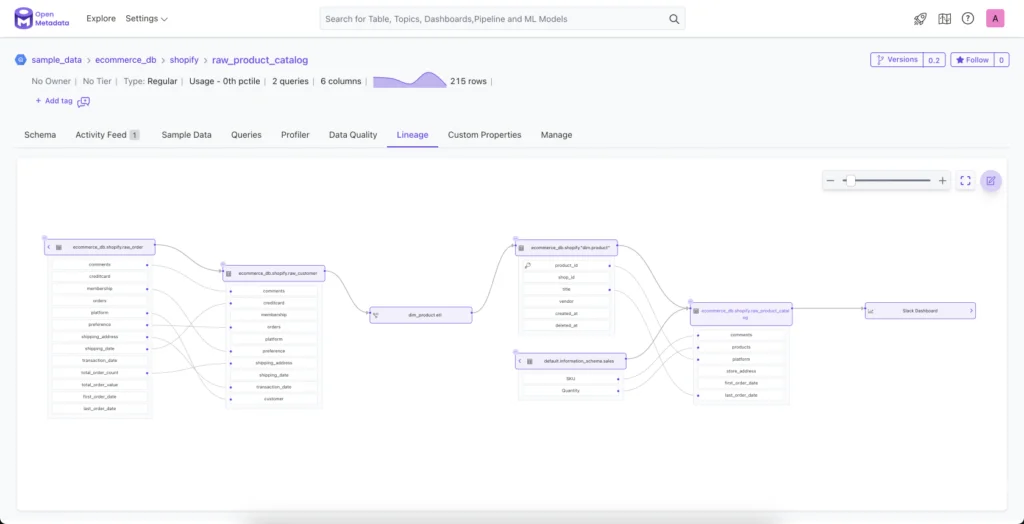
Key Features
Some of the key features include:
- OpenMetadata provides column-level lineage—a highly detailed view of data transformation and dependencies down to individual columns.
- It allows you to employ advanced query filtering capabilities, enabling you to focus on specific segments of data lineage for improved analysis.
- OpenMetadata’s integration with dbt reveals the underlying models responsible for table generation, providing richer context beyond basic data lineage.
5. Collibra Data Lineage
Collibra Data Lineage provides automated mapping of data relationships, showcasing data flow across systems and how you build, aggregate, and utilize your datasets. It offers a detailed, end-to-end visualization of your data lineage. Collibra’s data dictionary documents technical metadata, its usage, and the data structure, including its relationships, purpose, and format. This serves as a searchable repository for your workforce.
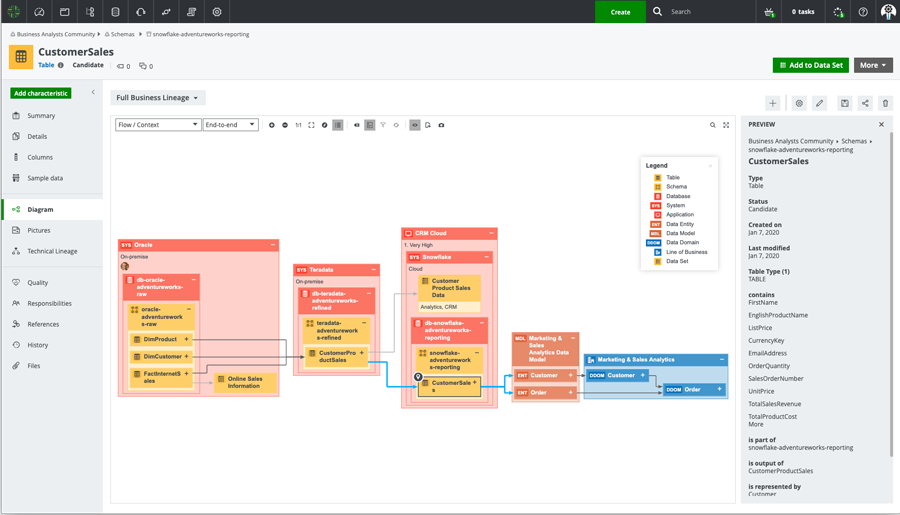
Key Features
Some of the key features include:
- You can seamlessly integrate Collibra with other tools and make data lineage accessible at scale.
- Collibra Data Lineage provides visibility into your organization's upstream and downstream analytics.
- It is designed for enterprise-level deployments and can handle large volumes of data and multiple users.
6. Octopai
Octopai is a comprehensive data lineage platform providing your organization with unparalleled visibility into complex data workflows. With its wide range of integration capabilities, Octopai automates metadata discovery and documentation across various data platforms, ensuring data accuracy. It especially benefits business intelligence, governance, and data cataloging use cases.
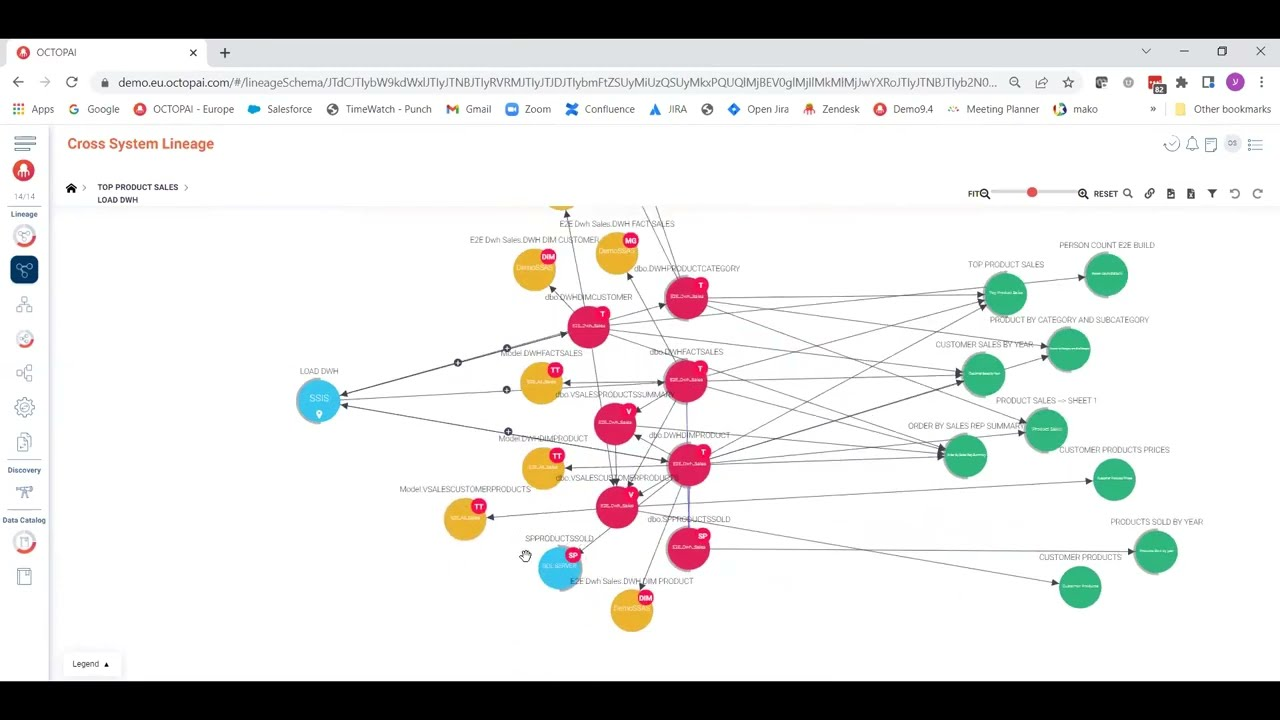
Key Features
Some of the key features include:
- Octopai offers cross-system, end-to-end column, and inner-system lineage. This granular approach provides a deeper understanding of your data transformations.
- By offering a clear picture of data dependencies and relationships, Octopai facilitates effective data governance practices.
- It has a user-friendly interface that simplifies data lineage exploration for users of all technical backgrounds.
7. Tokern
Tokern is a user-friendly platform that offers a powerful API and SDK to integrate seamlessly with your existing ETL framework. It helps you collect, visualize, and analyze column-level data lineage in databases, warehouses, and lakes across AWS and GCP environments. Tokern also enables you to identify and eliminate unused or outdated data pipelines and datasets, optimizing storage and streamlining your data management processes.
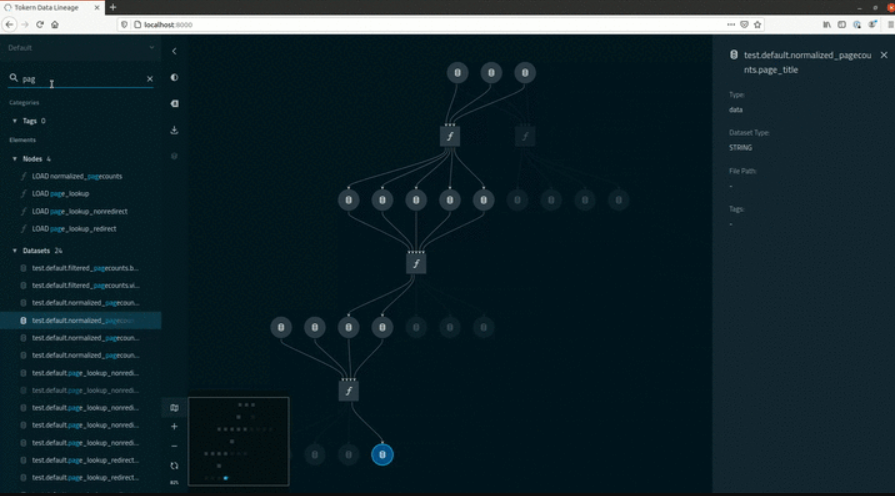
Key Features
Some of the key features of Tokern include:
- It allows you to automate everyday data management tasks, such as tracking PII, PHI, and other sensitive data and their access rights.
- Tokern supports ANSI SQL queries and leverages a query parser to construct data lineage from SQL query history.
- You can perform impact analysis and predict the downstream effects of your modifications, mitigating potential risks before they arise.
8. MANTA
MANTA is a robust data lineage tool that offers automated mapping and reporting tools for impact analysis. It gives a complete overview of your data pipelines and automatically updates lineage as needed, presenting data flow in a user-friendly and understandable manner. This empowers your organization's technical and non-technical teams to establish data management and governance processes.

Key Features
Some of the key features include:
- You can easily integrate MANTA into any data management ecosystem and discover relational data between workspaces, systems, and data objects.
- It helps improve your productivity and efficiency by leveraging metadata and using the code-based approach that eliminates errors.
- MANTA allows you to perform a step-by-step flow analysis that comprises color coding, dynamic filtering, and historical lineage at the column and attribute levels.
9. Talend Data Catalog
Talend data catalog provides a unified, secure control point for your organization's data, facilitating governance and management. It employs a machine-learning approach to data discovery and classification, making it easier to locate and understand your data assets. Talend data catalog offers automated data crawling and custom user access controls to enhance security and compliance, ensuring comprehensive end-to-end data lineage tracking.
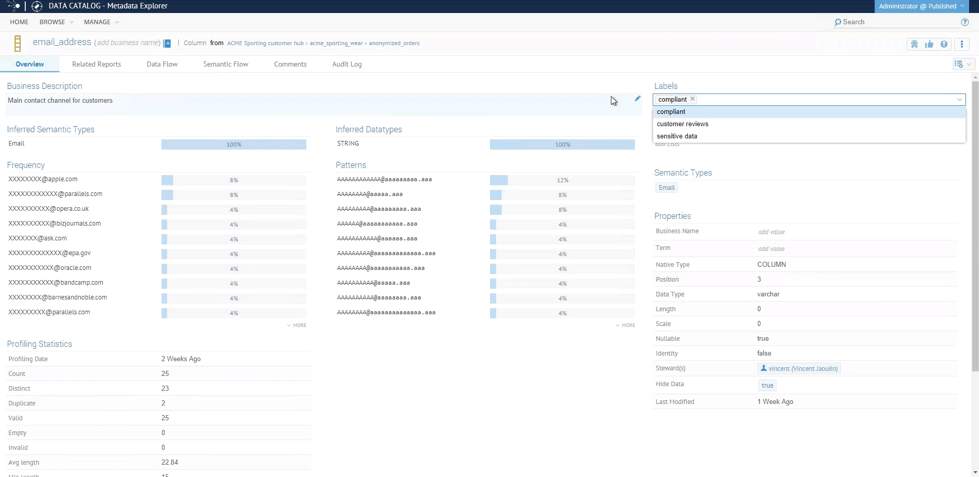
Key Features
Some of the key features of the Talend data catalog include:
- Its data flow lineage feature lets you pinpoint specific objects and understand their relationships within models, external metadata repositories, or configurations.
- Talend data catalog offers faceted search, data sampling, and auto-profiling features.
- It creates and manages an enterprise glossary of data terms, definitions, and validation rules for automatic data classification.
10. Dremio
Dremio is an SQL Lakehouse Platform designed to perform interactive analytics directly on your data lake storage. It uses technologies like Apache Arrow and data reflection to accelerate queries, while its semantic layer allows you to enforce security and business rules. You can access the data where it resides without relocating or converting its format.
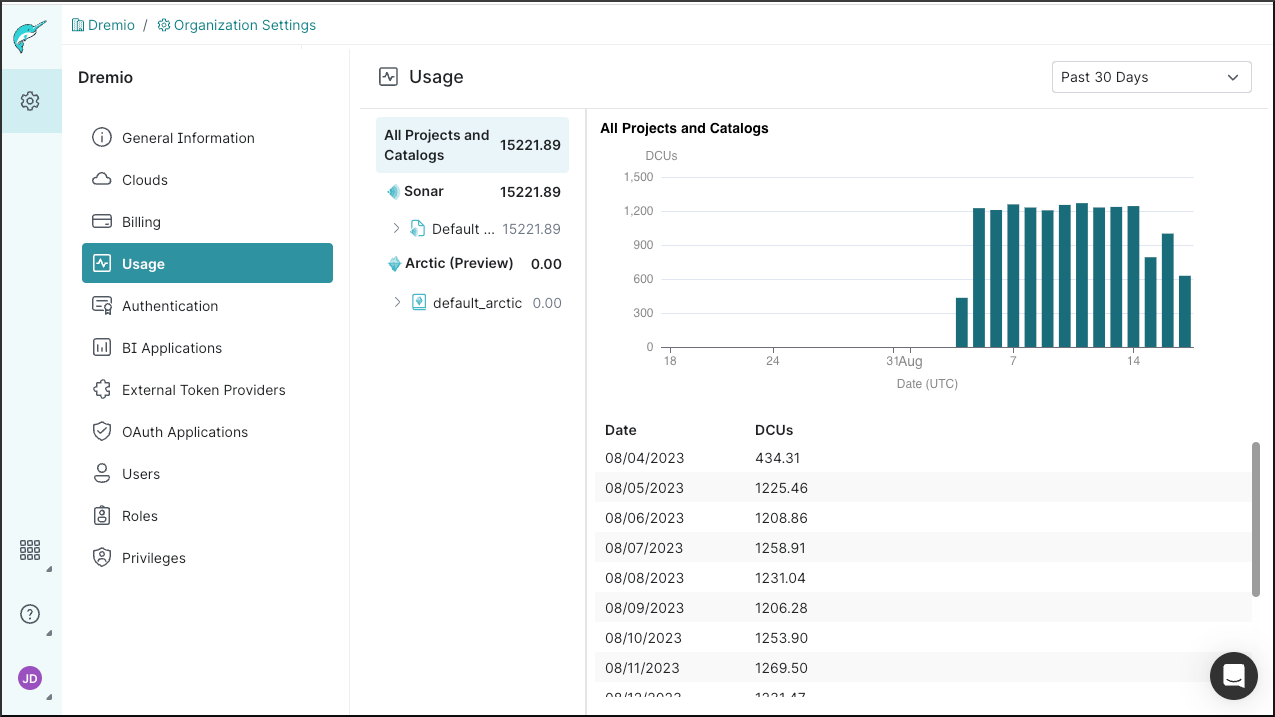
Key Features
Some of the key features of Dremio are:
- It features a data lake engine that ensures fast query speeds and includes a self-service semantic layer that operates directly on data lakes like S3, ADLS, and Hadoop.
- Dremio offers data lineage support by maintaining a data graph that tracks the origins and relationships of your data sources, virtual datasets, and queries.
- It provides a logical view of all your data, reducing the need for data movement and duplication. This helps with data governance and cost efficiency.
How Airbyte Supports Your Data Lineage Practices
While Airbyte doesn't provide a native, end-to-end data lineage solution, it plays a crucial role in establishing the foundation for data lineage. It helps implement seamless data lineage practices by consolidating your data residing in multiple sources and providing a unified view.
Airbyte is a data integration tool that allows you to extract data from disparate sources, such as databases, SaaS applications, and APIs, using a catalog of over 600+ pre-built connectors. You can then perform transformations and load the processed data into your preferred destination. This consolidation of data in a centralized repository eases your data lineage implementation.
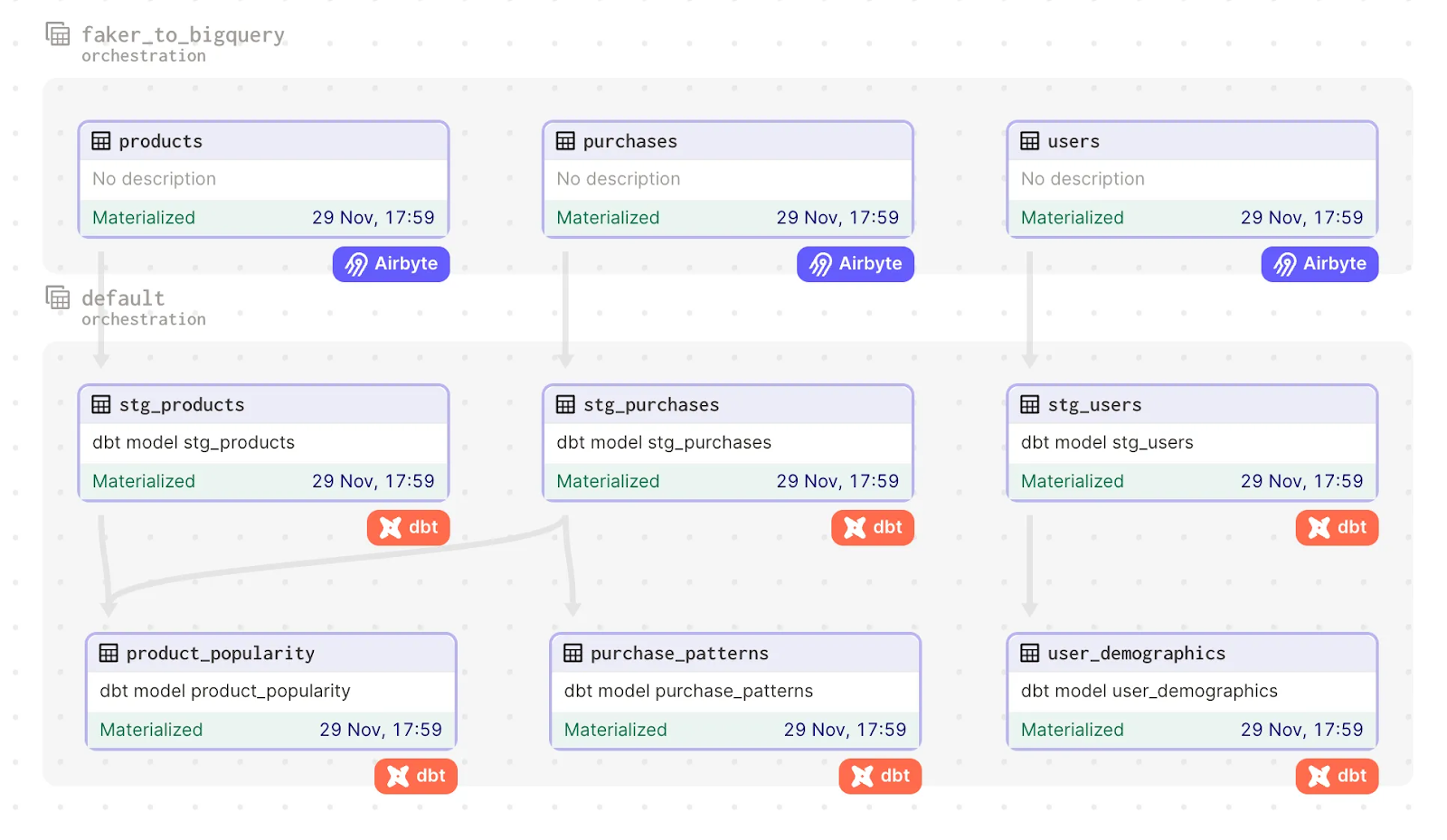
Key Features
Some key features of Airbyte include:
- Integration with Data Lineage Tools: Airbyte enables you to integrate with tools like Secoda to obtain comprehensive data lineage information.
- Detailed Logging: It records full logs that offer context about data movement, including timestamps, volume, and potential errors, which helps data lineage tools perform better analysis.
- Centralized Source of Truth: Airbyte provides you with a single source of truth based on metadata, ensuring that the same data is used across different services and data flows. This results in consistent, reliable data that streamlines data lineage analysis.
- GenAI Workflows: With Airbyte, you can simplify your GenAI workflows with AI-optimized data warehousing and RAG-specific transformations. It also allows you to fine-tune your ML models with the latest data required for data model training.
- Very Large CDC Syncs: Airbyte supports very large Change Data Capture (CDC) syncs through the WAL Acquisition Synchronization System (WASS). WASS employs adaptive snapshotting to alternate between taking initial snapshots and reading from the transaction log, ensuring no data is lost due to log retention limits.
- AI Assistant: You can leverage Airbyte’s AI Assistant to build custom connectors using the Connector Builder, significantly reducing setup time. This AI assistant scans the provided documentation and auto-fills key fields like base URL, authentication methods, and pagination settings.
- Record Change History: This feature significantly enhances the reliability and resilience of your data transfers by automatically adjusting problematic rows during transit. It ensures uninterrupted data syncs while maintaining full transparency.
- Self-Managed Enterprise Edition: Airbyte has announced the general availability of the Self-Managed Enterprise version. It includes advanced governance capabilities, such as user management, RBAC, PII masking, and single sign-on, making it ideal for large organizations that require enhanced security and compliance features.
Benefits of Using Data Lineage Tools
Data lineage tools offer numerous advantages that can enhance your data management strategy. Below are some key benefits:

Improved Data Quality Management
Using data lineage tools, you can automate data quality checks and identify discrepancies introduced at any stage of the pipeline. By pinpointing the source of data issues, you can address them efficiently and ensure high-quality, accurate, and consistent data for advanced analytics and reporting.
Increased Data Trust and Reliability
Data lineage tools provide a clear audit trail that explains to your stakeholders where the data comes from and how you use it. This transparency builds trust in your organization’s compliance with privacy laws and standard industry regulations. It also empowers you to implement responsible and reliable data utilization practices.
Improved Operational Efficiency
With data lineage tools, you can reduce the time and effort required to manage data and get a clear view of your data flow. They help identify bottlenecks, redundancies, and underutilized data pipelines, enabling you to optimize your data infrastructure and workflows for increased operational efficiency.
Easier Assessment of Potential Risks
You can leverage data lineage tools to analyze sensitive data points, identify potential vulnerabilities, and determine threats associated with data breaches, unauthorized access, or manipulation. This helps you implement preventive measures to maintain data security and mitigate risks effectively.
How to Pick the Right Data Lineage Tool?
Choosing the right data lineage tool requires careful consideration of your specific needs. Here is a roadmap to guide your selection:
Evaluate Your Data Infrastructure
You can start by assessing your existing sources, processing systems, and storage solutions involved in data workflows. Then, identify the key areas where data lineage is crucial, such as data ingestion, transformation, and reporting stages. Based on your requirements, you can determine whether you need column or table-level lineage.
Prioritize Your Needs
You must define your goals and priorities for implementing a data lineage tool while considering compliance, data quality management, and automation. Determining which features are essential and which are nice to have is also important. This helps in narrowing down your options and ensures the selected tool aligns with your business objectives.
Consider Integration with Other Tools
Your data lineage tool should be capable of integrating seamlessly with your existing data transformation tools and ETL tools. Compatibility with your data warehouses, ETL processes, and BI platforms is crucial for the smooth flow of data lineage information across your organization, enhancing overall efficiency and effectiveness.
Scalability and User Interface
Evaluate your tool’s scalability to ensure it can handle increasing data volumes and complex data environments without any performance issues. The tool should also have intuitive navigation and visualizations. With a user-friendly interface, your employees can quickly adapt and utilize the tool's features without extensive training.
Support and Cost
Consider the level of support vendors provide. Responsive customer support, comprehensive documentation, and training resources are all crucial for successful implementation and ongoing use. You should compare the cost of the tool, including initial licensing, subscription fees, and upgrade charges, to your budget and the value it brings to your data management strategy.
Request Demo for Your Tool
Before making a final decision, you should request a demo or trial of the shortlisted tools. This hands-on experience allows you to evaluate the tool's functionality, usability, and compatibility with your data environment. Use the demo to test key features, assess performance, and gather feedback from your teams to ensure it meets your objectives.
Wrapping It Up
Data lineage tools are essential for understanding your data's journey, ensuring its quality, and making informed decisions. By providing visibility into data transformations and dependencies, these tools help you improve data governance, streamline operations, and mitigate risks.
To choose the right data lineage tool for your organization, consider your data infrastructure, specific business needs, and integration capabilities, among other factors. Select a tool that effectively addresses your organization's data management challenges and stays relevant in the long run.
Data Lineage FAQs
1. Why is data lineage important in data governance?
Data lineage provides visibility into how data flows and transforms across systems, helping ensure compliance, audit readiness, and trust in data assets.
2. What’s the difference between technical and business data lineage?
Technical lineage tracks how data moves and transforms at the system or code level (e.g., SQL queries), while business lineage shows how data supports business processes, KPIs, and decisions.
3. Can data lineage tools help with debugging data pipeline issues?
Yes. They enable you to trace errors to specific sources or transformation steps, significantly reducing time spent diagnosing and fixing data pipeline failures.
4. What’s column-level data lineage and why does it matter?
Column-level lineage shows how individual data columns are derived and transformed. It's crucial for granular impact analysis, compliance, and data quality checks.
5. How do data lineage tools integrate with modern data stacks?
Most tools integrate with popular data platforms (like Snowflake, BigQuery, dbt, Airbyte, etc.) via APIs, connectors, or metadata ingestion, making it easier to map data flow across diverse systems.
Suggested Reads
What should you do next?
Hope you enjoyed the reading. Here are the 3 ways we can help you in your data journey:



Frequently Asked Questions
What is ETL?
ETL, an acronym for Extract, Transform, Load, is a vital data integration process. It involves extracting data from diverse sources, transforming it into a usable format, and loading it into a database, data warehouse or data lake. This process enables meaningful data analysis, enhancing business intelligence.
This can be done by building a data pipeline manually, usually a Python script (you can leverage a tool as Apache Airflow for this). This process can take more than a full week of development. Or it can be done in minutes on Airbyte in three easy steps: set it up as a source, choose a destination among 50 available off the shelf, and define which data you want to transfer and how frequently.
The most prominent ETL tools to extract data include: Airbyte, Fivetran, StitchData, Matillion, and Talend Data Integration. These ETL and ELT tools help in extracting data from various sources (APIs, databases, and more), transforming it efficiently, and loading it into a database, data warehouse or data lake, enhancing data management capabilities.
What is ELT?
ELT, standing for Extract, Load, Transform, is a modern take on the traditional ETL data integration process. In ELT, data is first extracted from various sources, loaded directly into a data warehouse, and then transformed. This approach enhances data processing speed, analytical flexibility and autonomy.
Difference between ETL and ELT?
ETL and ELT are critical data integration strategies with key differences. ETL (Extract, Transform, Load) transforms data before loading, ideal for structured data. In contrast, ELT (Extract, Load, Transform) loads data before transformation, perfect for processing large, diverse data sets in modern data warehouses. ELT is becoming the new standard as it offers a lot more flexibility and autonomy to data analysts.

.webp)